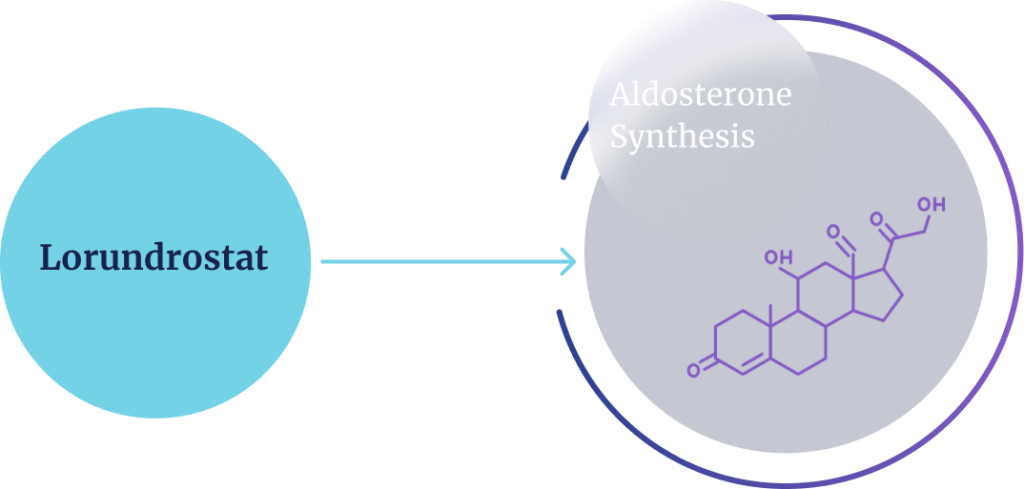
In a phase 2 clinical trial, lorundrostat was effective in reducing blood pressure in people with uncontrolled hypertension taking at least 2 medications, including those on 3 or more medications (treatment-resistant hypertension), and lorundrostat was well tolerated.1


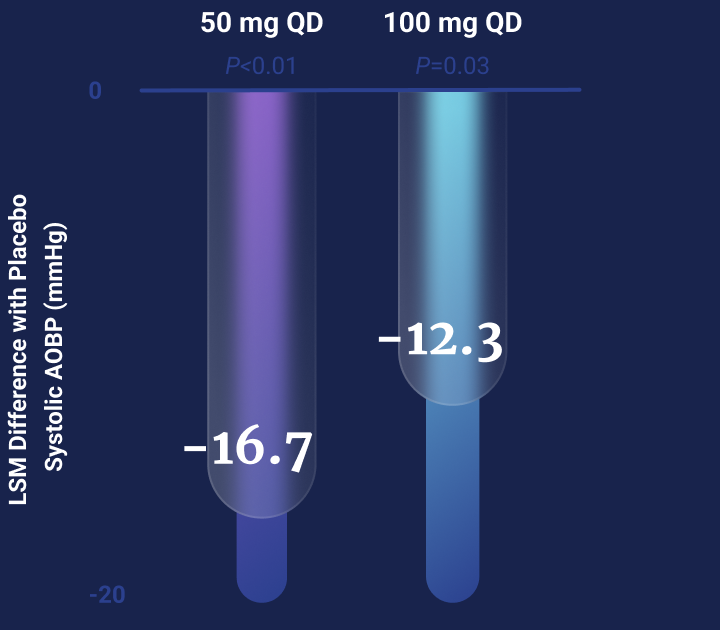
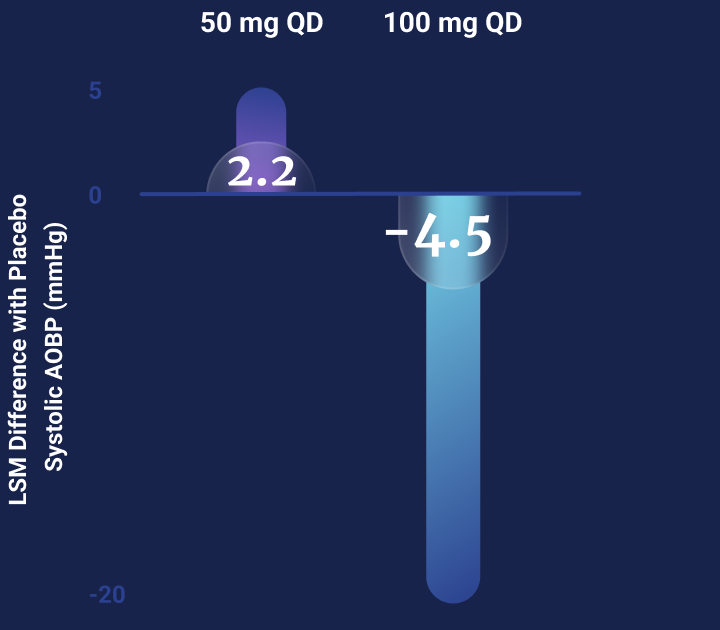
The adverse event profile was as expected for an ASI with modest changes in sodium and potassium levels observed. Only one clinically significant event was observed, worsening hyponatremia in a participant on the 100-mg once-daily dose of lorundrostat. No meaningful effect on serum cortisol levels was observed.
Ongoing clinical trials are evaluating the efficacy and safety of lorundrostat in people with uncontrolled hypertension, including treatment-resistant hypertension, and people with hypertension and chronic kidney disease.
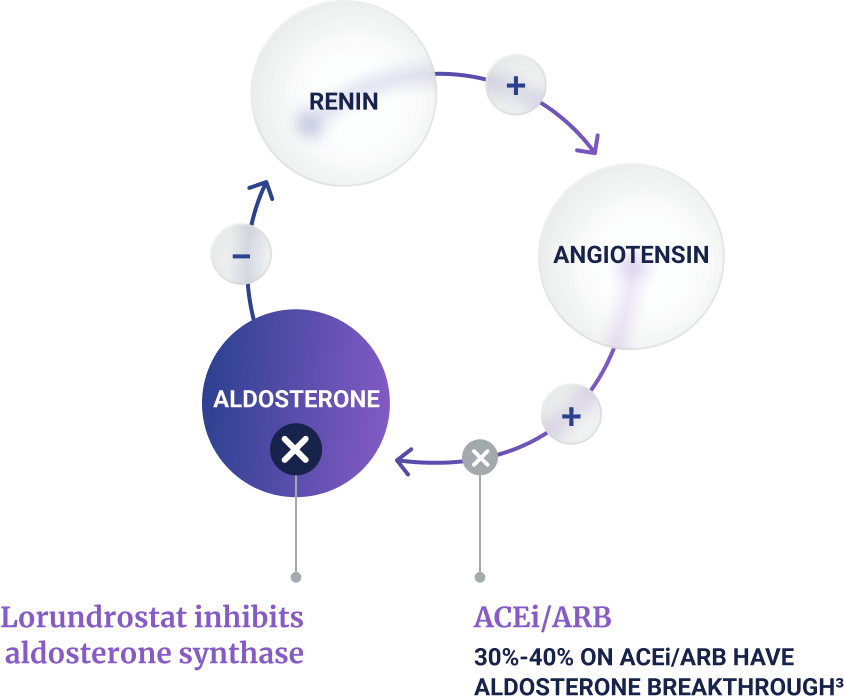

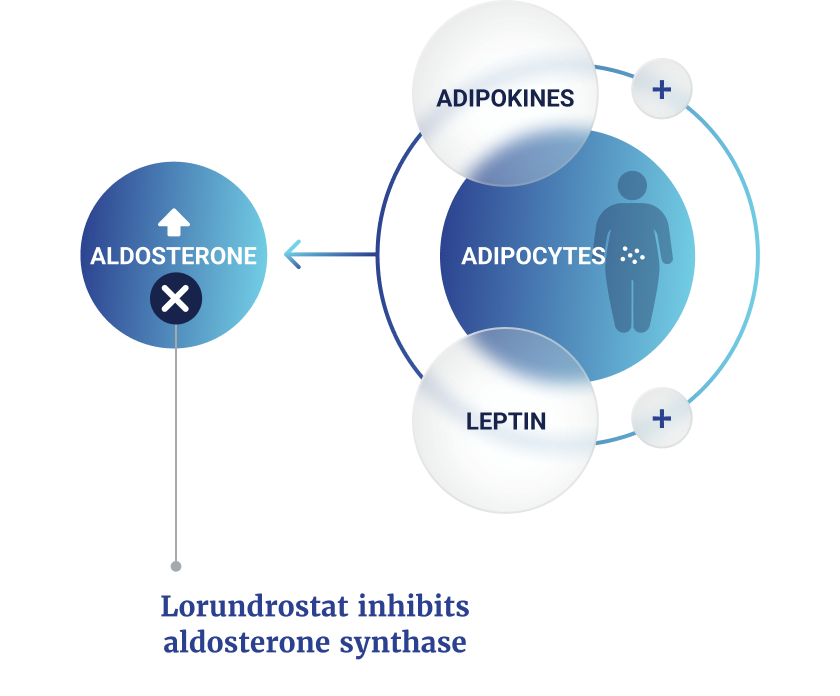
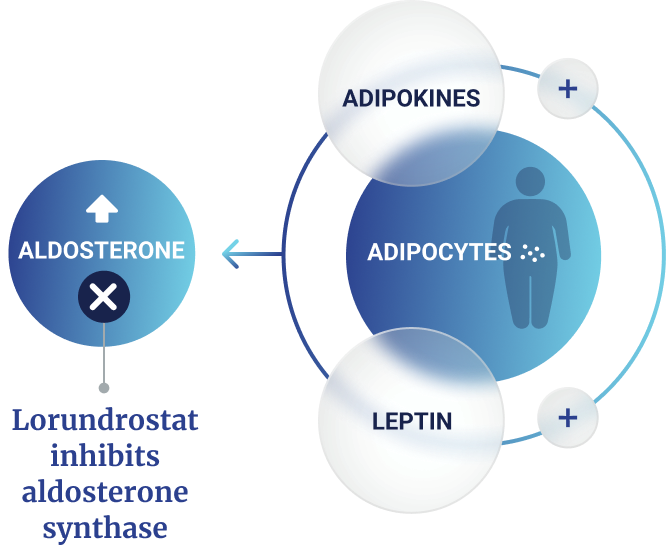
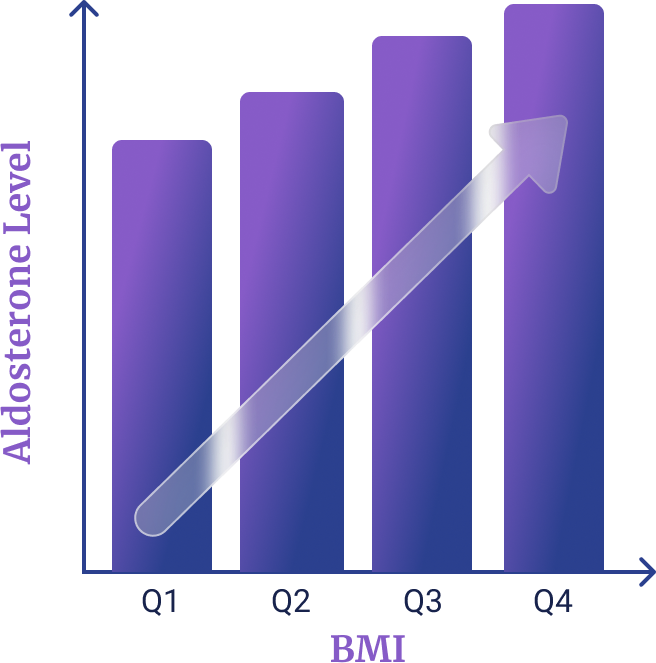
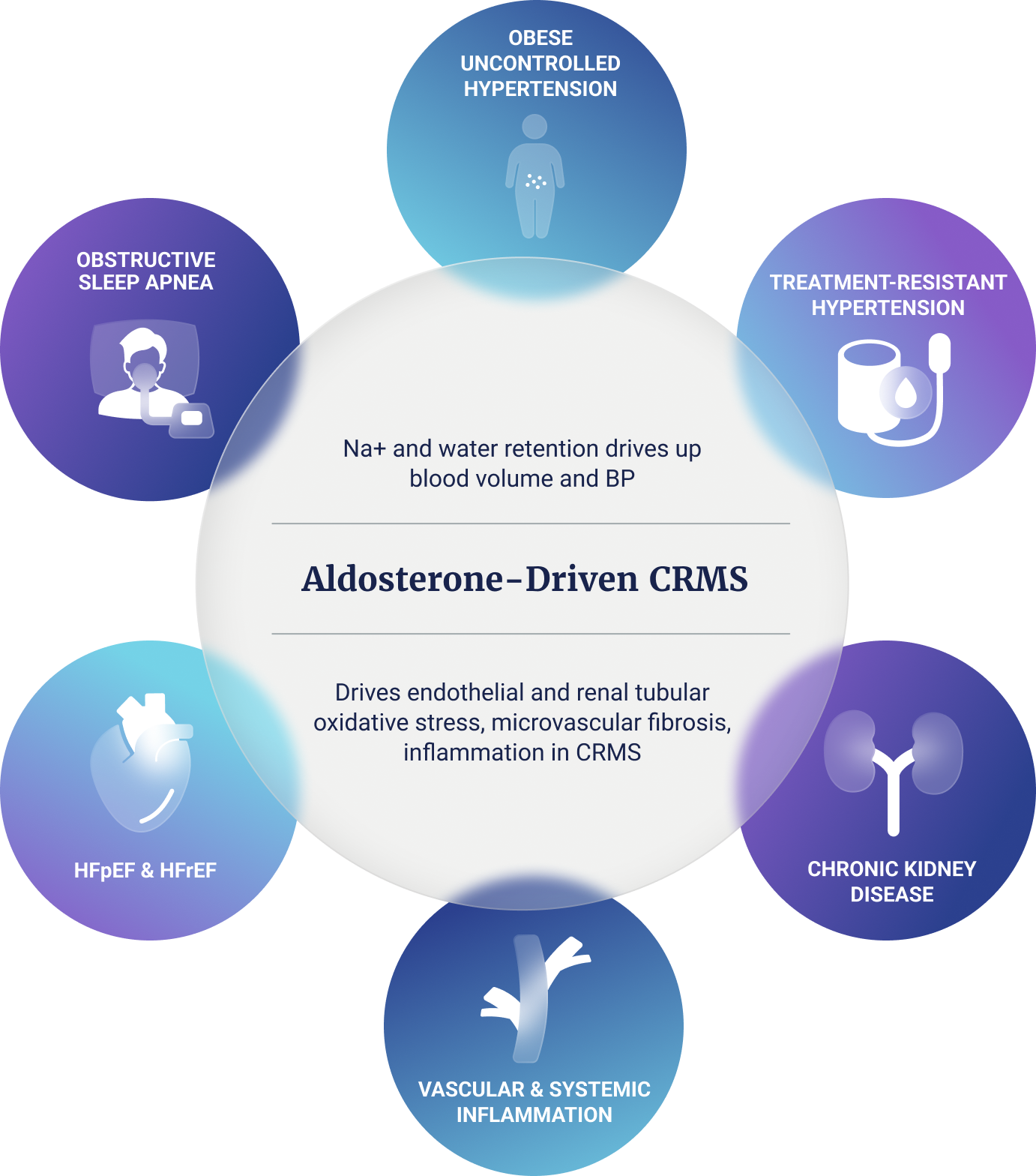
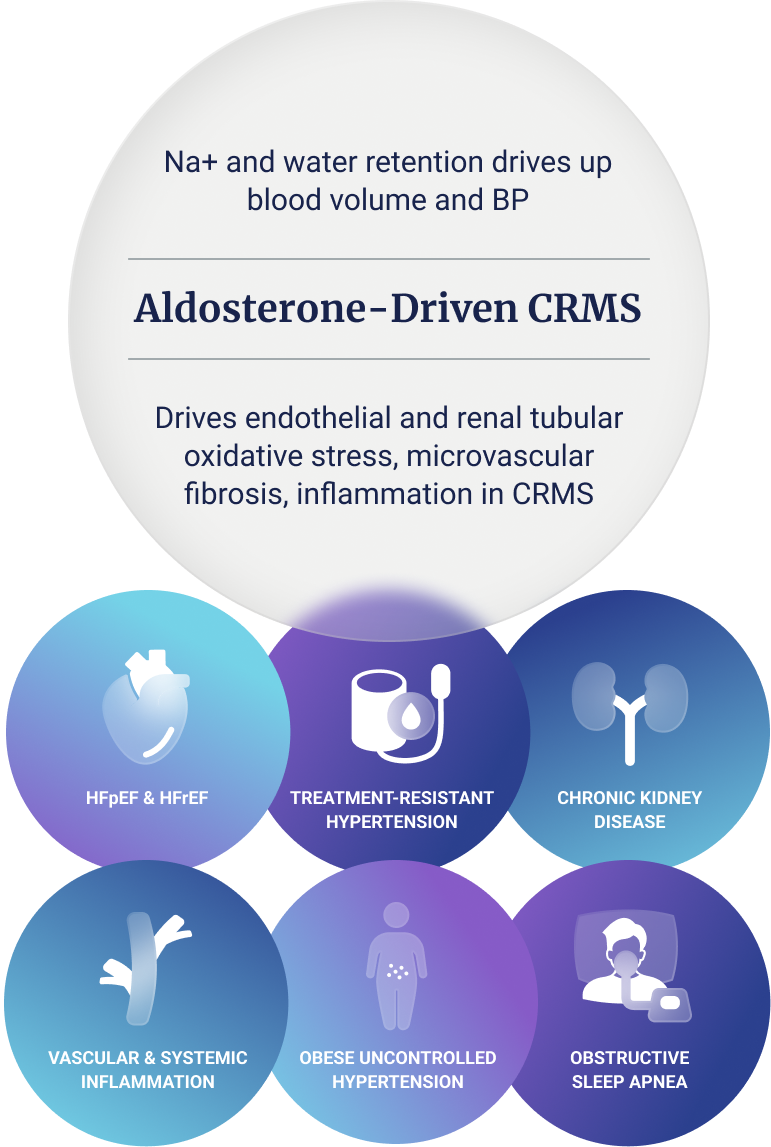
Dysregulated aldosterone may lead to inflammation and fibrosis that damages the kidney and cardiovascular system.13
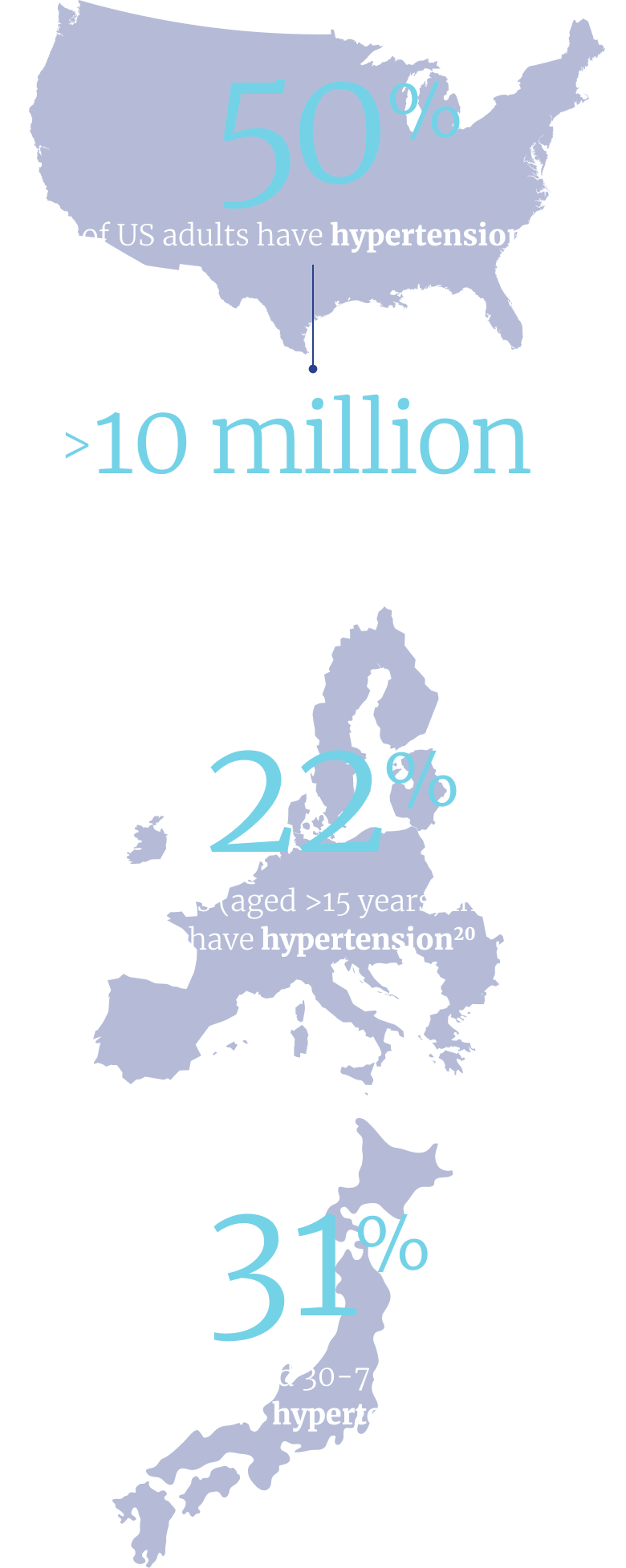
This is because their current treatment is not reducing their blood pressure to an acceptable level.
Despite many treatment options, over 70% of people with high blood pressure in the US have uncontrolled hypertension.22
This is because their current treatment is not reducing their blood pressure to an acceptable level.
The American College of Cardiology and European Society of Hypertension provide guidance about uncontrolled hypertension, including treatment-resistant hypertension.23, 24
In general, people with treatment-resistant hypertension are those who are above blood pressure goals despite treatment with 3 or more antihypertensives, including a diuretic.23, 24
Dysregulated aldosterone is a key driver of uncontrolled hypertension, including treatment-resistant hypertension, and other CRMS diseases.2, 26
Uncontrolled hypertension increases the risk for other CRMS diseases such as heart failure and kidney disease.27
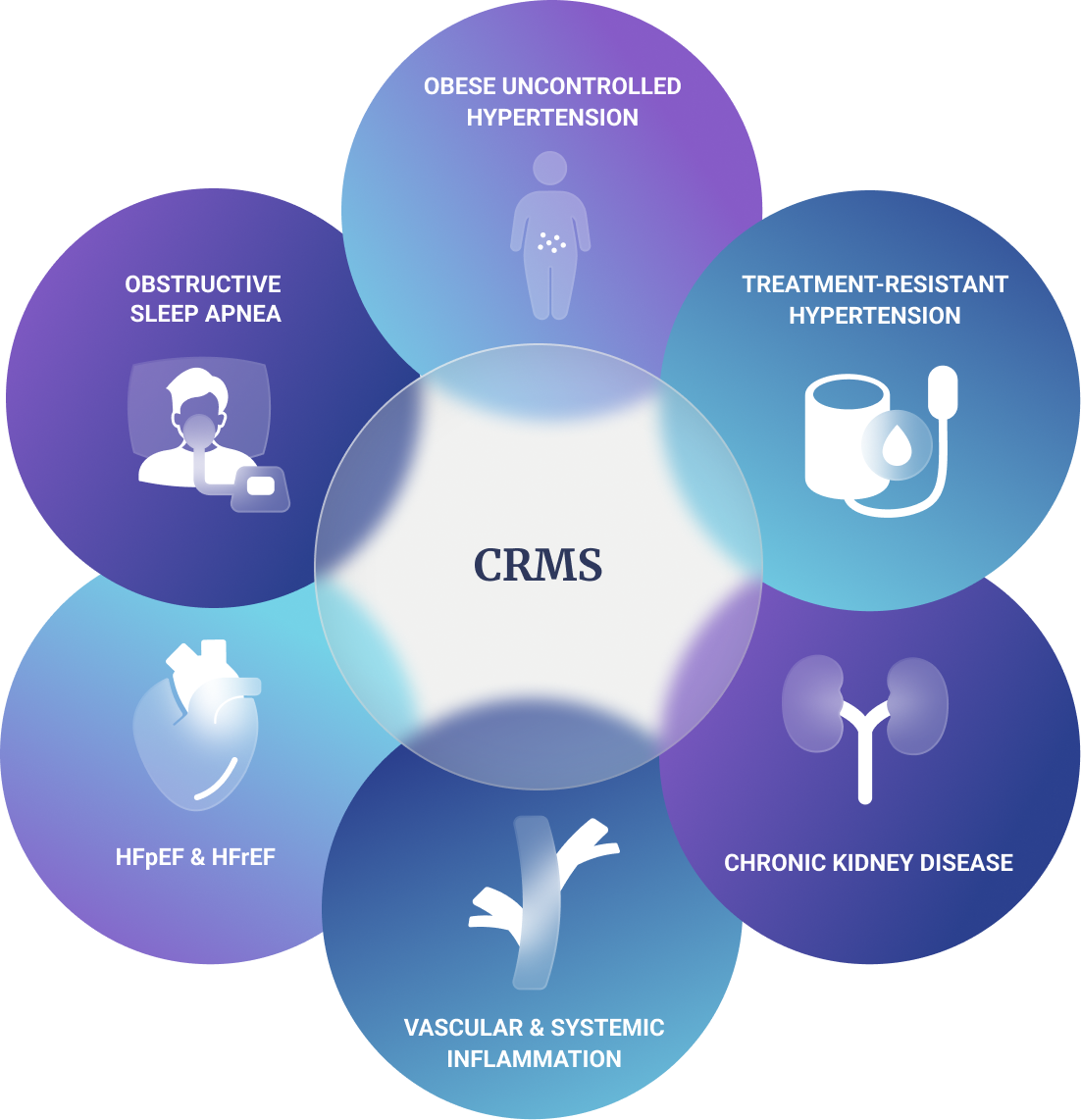
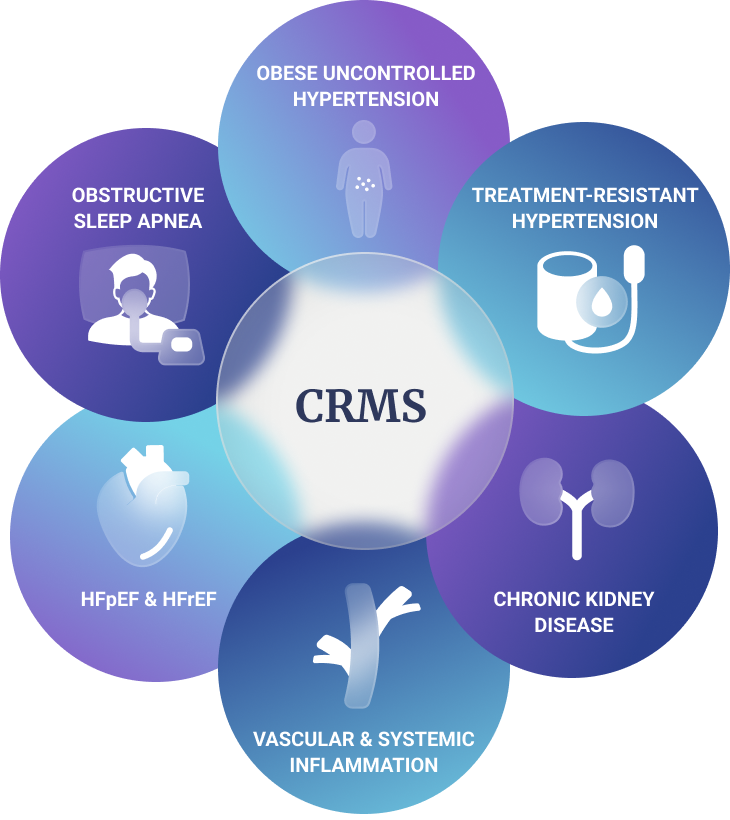
The current empiric treatment strategy for people with uncontrolled hypertension, including treatment-resistant hypertension, is to add additional antihypertensive treatments.23, 24

Aldosterone synthase inhibitor therapy targets aldosterone-dependent hypertension, including obesity-related aldosterone-dependent hypertension.
Given that elevated blood pressure is associated with an increased risk of CRMS morbidity, including cardiovascular events, stroke, and heart failure,28 a treatment approach targeting inhibition of aldosterone synthesis could potentially improve rates of blood pressure control in people with dysregulated aldosterone and reduce the risk for CRMS events.
References: 1. Laffin LJ, et al. JAMA. 2023;330(12):1140-1150. 2. Buglioni A, et al. Hypertension. 2015;65(1):45-53. 3. Bomback AS, Toto R. Am J Hypertens. 2009;22(10):1032-1040. 4. Brown JM, et al. Ann Intern Med. 2020;173(1):10-20. 5. Cannavo A, et al. Oxid Med Cell Longev. 2018:2018:1204598. 6. Briet B, Schiffrin EL. J Vasc Res. 2013;50(2):89-99. 7. Dudenbostel T, et al. Hypertension. 2016;68(4):995-1003. 8. Hall JE, et al. Nat Rev Nephrol. 2019;15(6):367-385. 9. Huby AC, et al. Hypertension. 2016;67(5):1020-1028. 10. Huby AC, et al. Circulation. 2015;132(22):2134-2145. 11. Ehrhart-Bornstein M, et al. Endocr Res. 2004;30(4):865-870. 12. De Haro Moraes C, et al. J Hum Hypertens. 2013;27(4):225-230. 13. Otsuka H, et al. Int J Mol Sci. 2023;24(6):5370. 14. Sawathiparnich P, et al. J Clin Endocrinol Metab. 2002;87:448-452. 15. Karns AD, et al. J Clin Hypertens (Greenwich). 2013;15: 186-192. 16. Calhoun DA, et al. Circulation. 2011;124:1945-1955. 17. World Health Organization. Global report on hypertension: the race against a silent killer. 2023. Available at: https://www.who.int/teams/noncommunicable-diseases/hypertension-report (Accessed May 2024). 18. Stierman B, et al. National Health and Nutrition Examination Survey 2017–March 2020 prepandemic data files—Development of files and prevalence estimates for selected health outcomes. National Health Statistics Reports; no 158. Hyattsville, MD: National Center for Health Statistics. 2021. DOI: https://dx.doi.org/10. 15620/cdc:106273. 19. Carey RM, et al. Hypertension. 2019;73(2):424-431. 20. Eurostat. Available at: https://ec.europa.eu/eurostat/web/products-eurostat-news/-/edn-20210929-1 (Accessed September 2024). 21. World Health Organization. Hypertension Japan 2023 country profile. Available at: https://www.who.int/publications/m/item/hypertension-jpn-2023-country-profile. Accessed July 2024. 22. Centers for Disease Control and Prevention (CDC). May 12, 2023. Available at: https://millionhearts.hhs.gov/data-reports/hypertension-prevalence.html (Accessed May 2024). 23. Whelton PK, et al. Hypertension. 2018;71(6):1269-1324. 24. Mancia G, et al. J Hypertens. 2023;41(12):1874-2071. 25. Ndumele CE, et al. Circulation. 2023;148:1606-1635. 26. Acelajado MC, et al. Circ Res. 2019;124(7):1061-1070. 27. Burnier M, Damianaki A. Circ Res. 2023;132(8):1050-1063. 28. Williams B, et al. Eur Heart J. 2018;39(33):3021-3104.